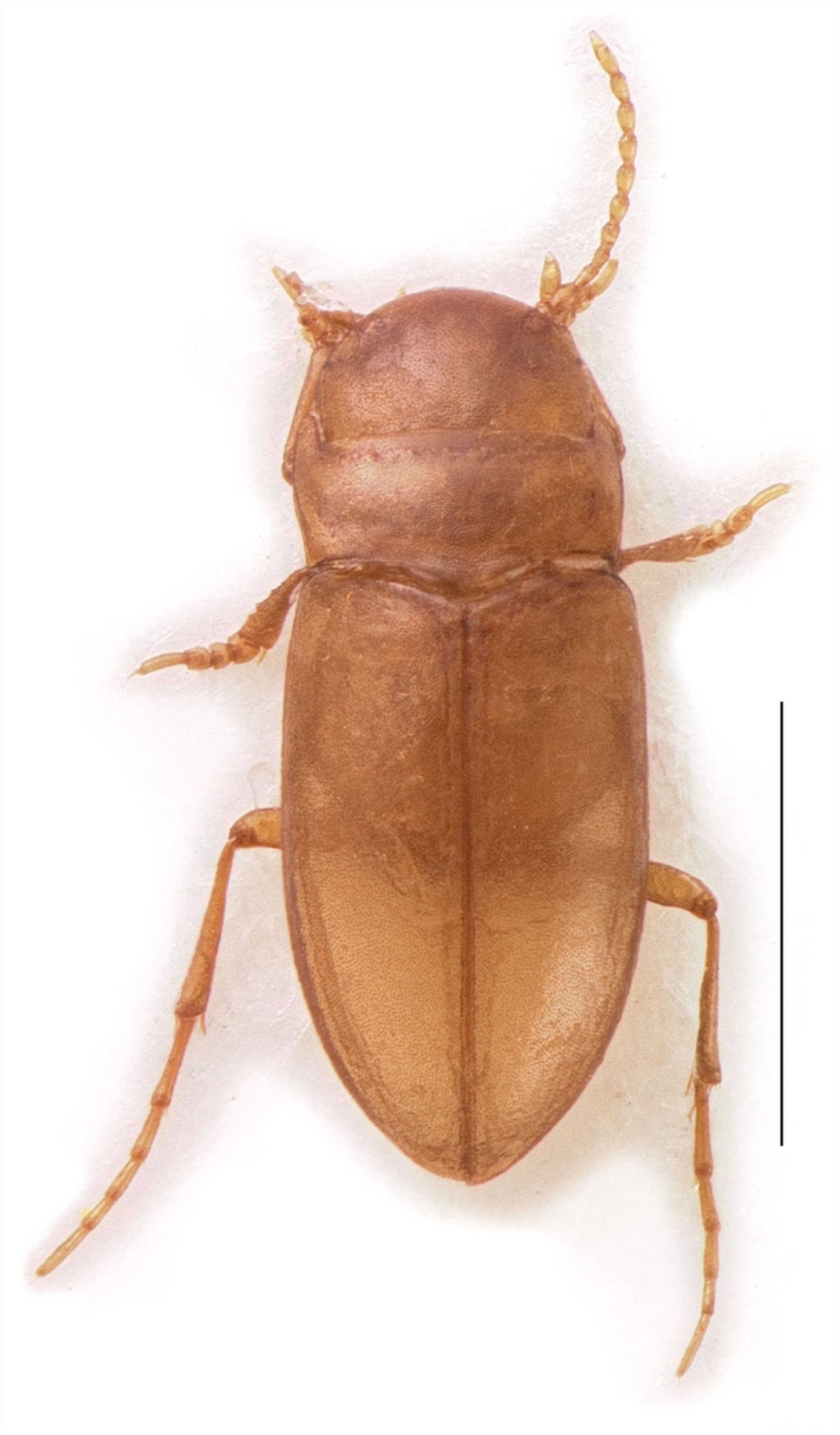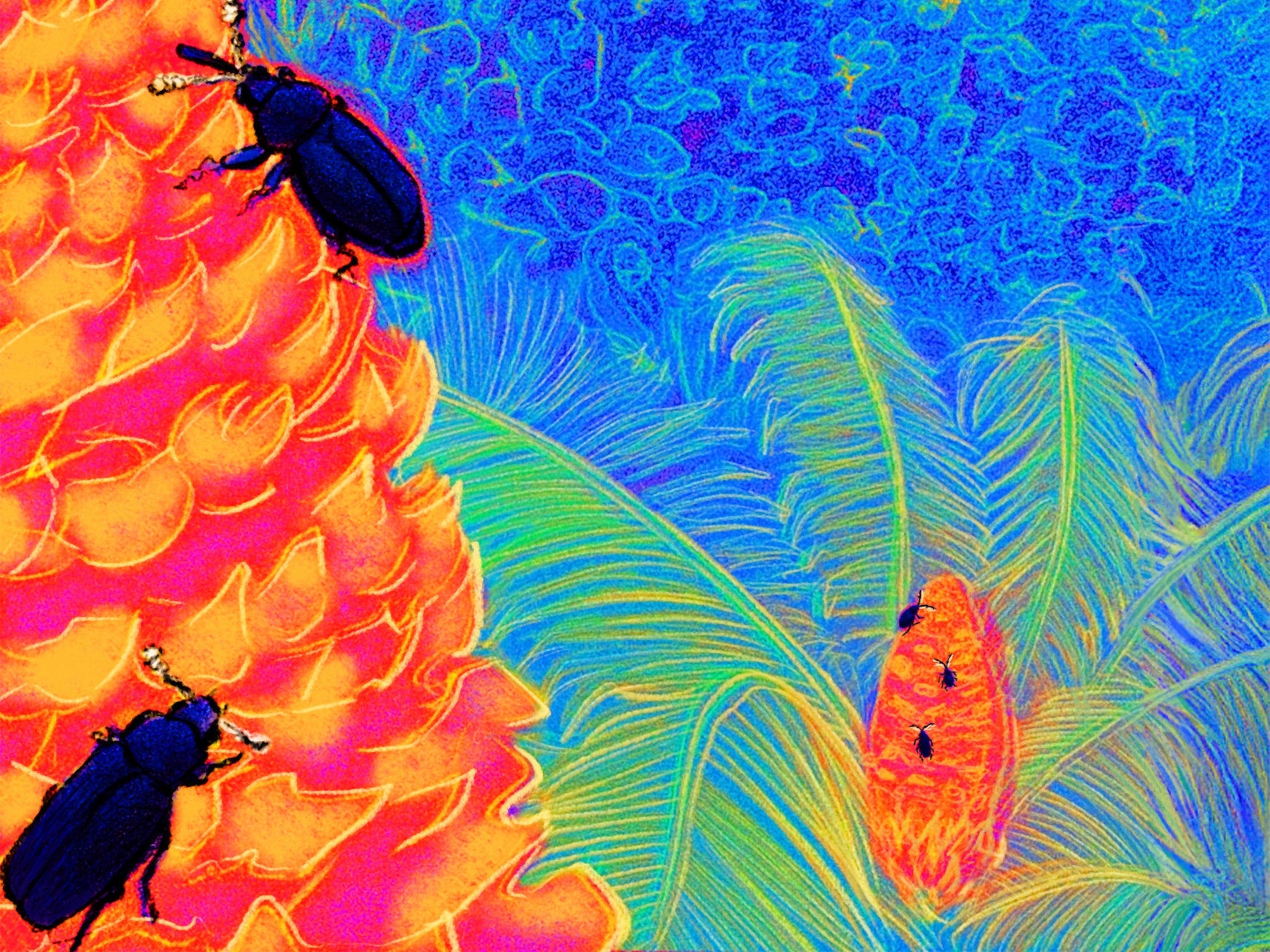
Diving Beetle, First Found in Bathtub, Rediscovered 30 Years Later
In 1984, an Oregon family found a new species in their bathroom. No one saw the pale, blind creature again—until now.
When it comes to objects floating in the bathtub, most of us expect to see, at most, a rubber ducky.
But in 1984, a couple outside of Salem, Oregon (map), discovered tiny beetles floating in the water when they went for their daily scrub-a-dub.
As it turns out, these uninvited insects were a species completely new to science.
But before anyone could find more samples to study the bathing beauties, the homeowners cleaned out their well with huge quantities of bleach, presumably killing them.
The beetles weren't seen again—until now. (Read about a new beetle first collected by Charles Darwin.)
Scientists have rediscovered the pale, blind diving beetle Stygoporus oregonensis—and stumbled upon a mystery surrounding their past, according to a study published recently in the journal ZooKeys.
Alive and Well
The Oregon family originally thought their bathtub had been infested by fleas, so they sent a sample of the insect to an entomologist at Oregon State University.
The scientist realized right away that these were beetles, not fleas, and that they were likely a new species. Jim LaBonte, an Oregon State undergraduate at the time, formally described the species in an article in the Coleopterists' Bulletin and tried to learn more, only to discover that the well had been bleach-bombed.
Fast forward three decades. Oregon State entomologist Richard Van Driesche, who grew up about 20 miles southeast of Salem, had read about these little-seen beetles and wanted to find more.
When he examined the filter of a well on his parents' farm, he found tiny pieces of what looked to be decomposing S. oregonensis. A positive sign, but not enough samples to study.
Months later, Van Driesche checked the filter again, and discovered several recently deceased beetles that yielded usable DNA.
Van Driesche and colleagues confirmed the genetic material was from S. oregonensis, as well as revealed it's closely related to a group of four diving beetle species that live hundreds of miles away in a single aquifer near San Marcos, Texas (map). These species are the only other known aquifer diving beetles in the United States. (See an interactive of vanishing aquifers in the U.S.)
It's unusual for two closely related species to live so far away from one another—especially such tiny ones—and the scientists are very curious to find out how the beetle species got from one state to the other.
“They’re only about two millimeters long, which means you can fit 12 of them in a single inch,” said LaBonte, now an entomologist at the Oregon Department of Agriculture.
Off the Beaten Path
Because both the Texas and Oregon diving beetles have lived in pitch-black underground aquifers for millions of years, they long ago lost their eyesight.
Unable to navigate by sight, the insects instead sense their environment with hairs covering their body. “It’s similar to how a cat uses its whiskers,” LaBonte said. (Find out why insects rule the world.)
However, these hairs prevent the beetles from resubmerging themselves if they come above thes surface—which means leaving the water is essentially a death sentence. Since no single, continuous aquifer connects Oregon and Texas, the beetles would have no way to survive their transcontinental travels.
Study leader Kojun Kanda, a biologist at Oregon State, believes more undiscovered aquifer beetles are out there.
“We don’t really think of the U.S. as being a biodiversity hot spot, but there are a lot of undiscovered species—even in our own backyards."
Follow Carrie Arnold on Twitter.





